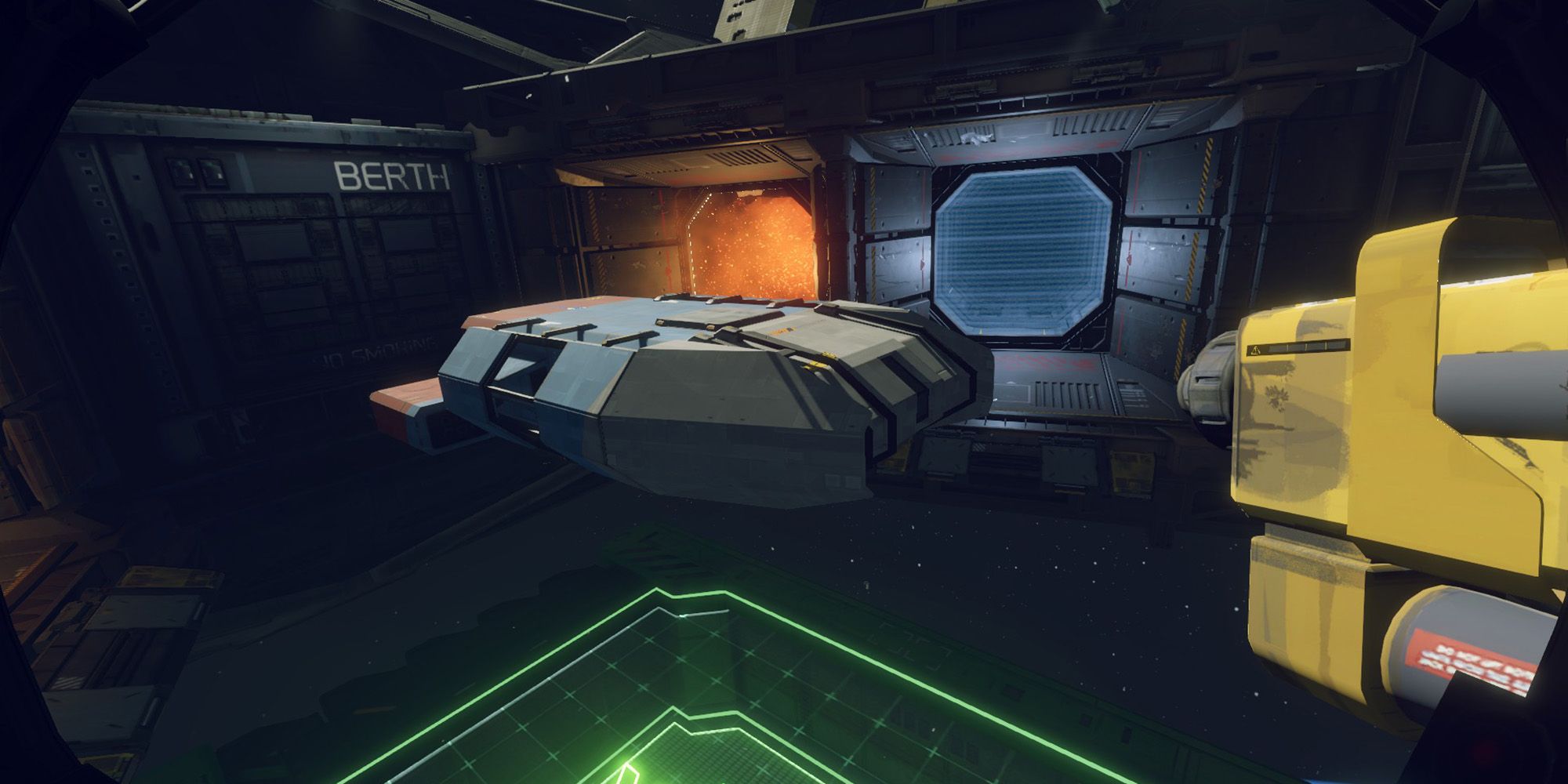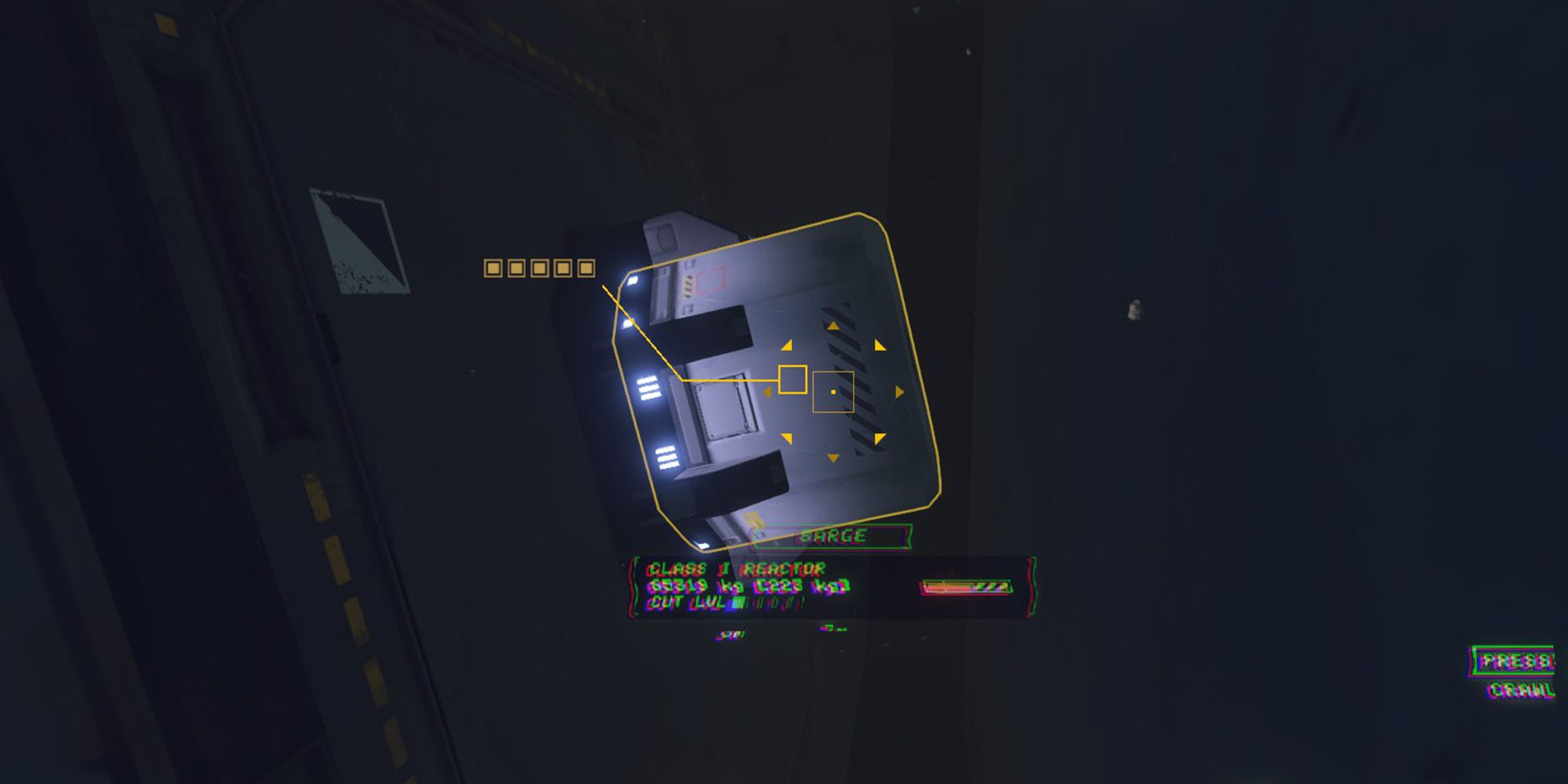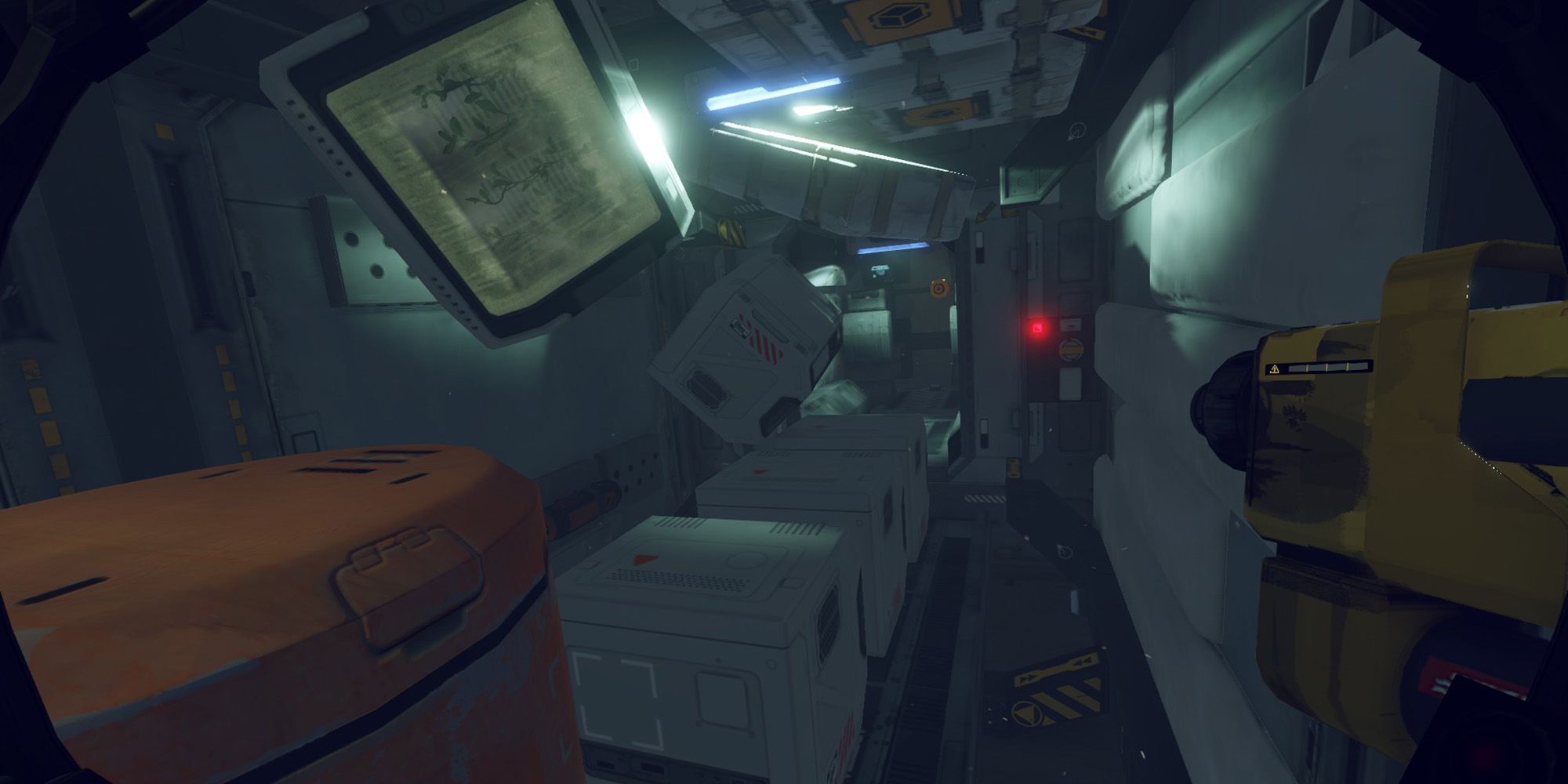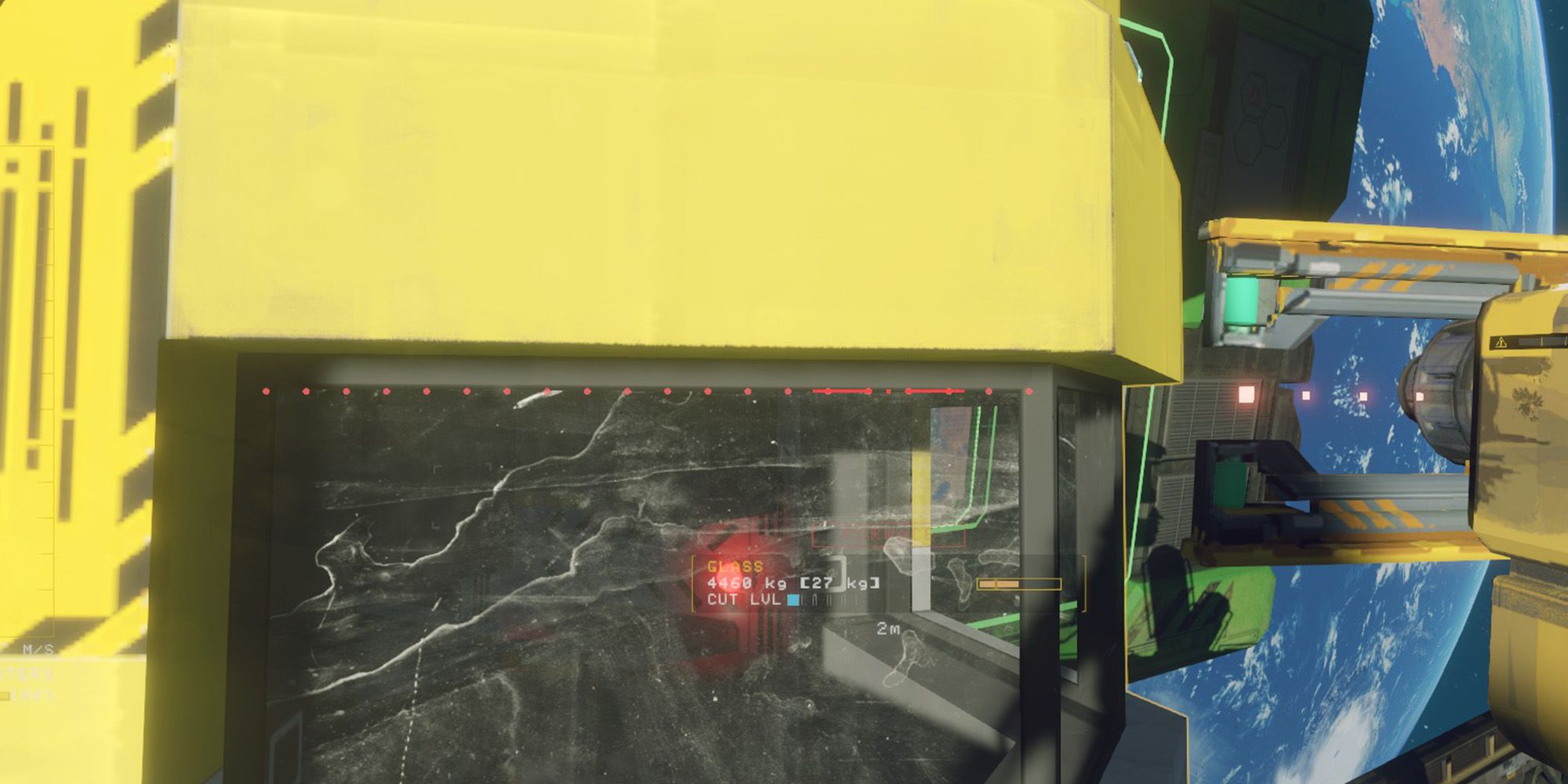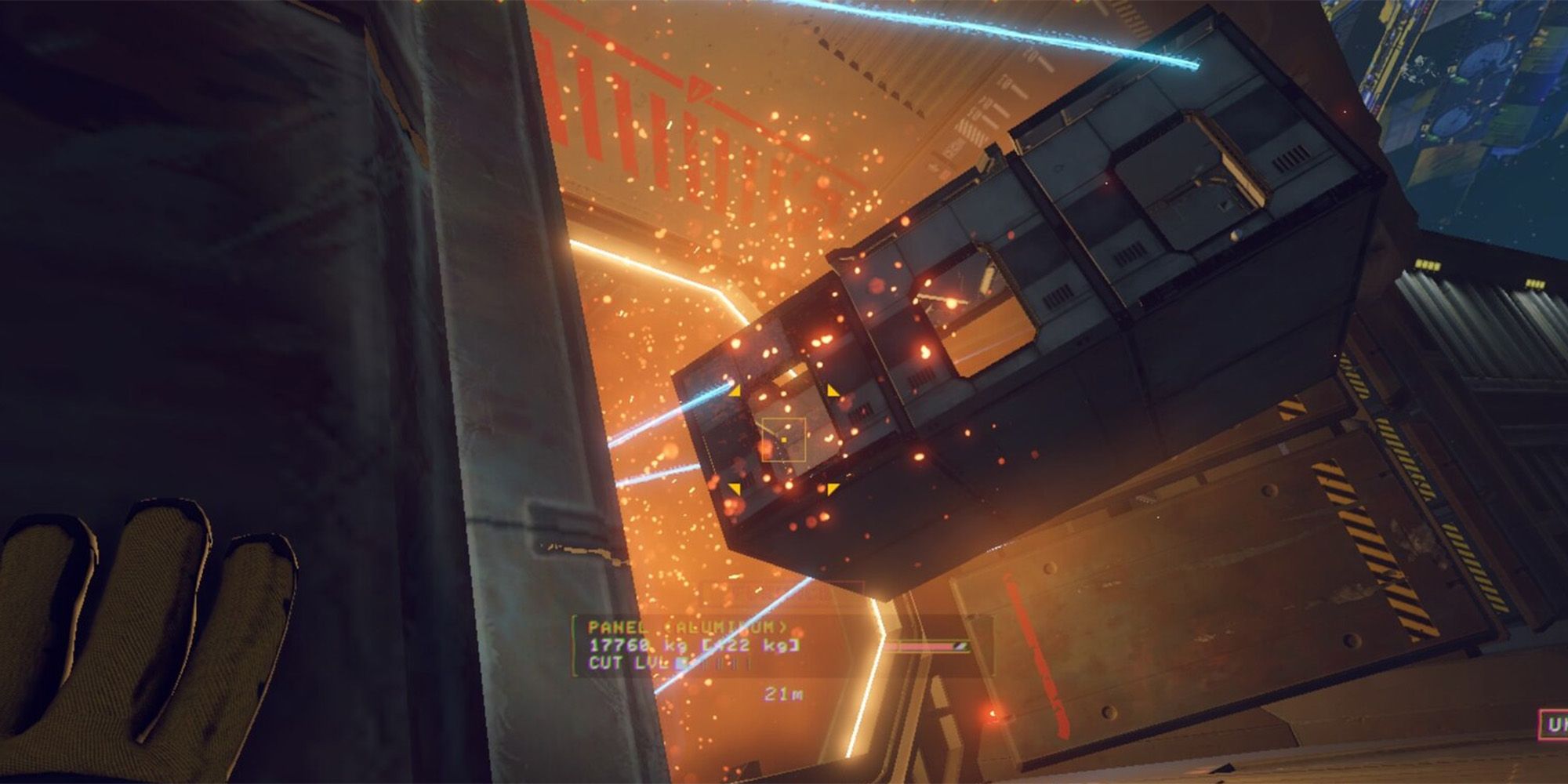The Mackerel is the smallest class of ship available for salvaging in Hardspace: Shipbreaker. This type of ship is the first you will be allowed to work on, allowing you to hone your skills as an apprentice Shipbreaker. While your first Mackerel may not be difficult to salvage, higher hazard levels might give you some trouble.
If you want to reach as many salvage goals as you can on Mackerel class ships, you'll need to plan accordingly. In this guide, we'll take a look at how to efficiently salvage a Mackerel class ship, and get as close as possible to 100 percent salvage. First, let's start with the exterior of the ship.
Mackeral Class Ship Salvage Walkthrough
Start by removing easily detachable objects from the outside of the ship like antennas, communication arrays, or nacelles. If the nacelles are connected from inside the ship, wait to remove them until later using the designated cut points.
Next, head inside the ship and depressurize each cabin by using the atmosphere regulator. If no regulator is present, you'll need to do a rapid decompression by opening the airlock door or cutting into the exterior. Hold on to the wall to prevent yourself from flying away during the rapid expulsion of air.
Now that the ship is decompressed, open your scanner and look for the reactor, if present. In Mackerel class ships, the reactor is usually attached to an interior wall on the side of the ship. Once you've found the reactor, carefully remove the hull panels around the area, making sure to cut along the cut points. When you have an area clear, slowly remove the reactor from its mounting plate, then tether it to the barge to safely salvage it.
The reactor is the most volatile salvage item in the ship, so take extra precautions when removing it.
The next parts of the ship you'll want to salvage are the fuel tanks. First, find the fuel tank, then look for the flush fuel valve. If there is a fuel valve, activate it to drain the fuel from the pipes into the tank. If there is no valve, then you are safe to detach and remove the fuel tanks. Before removing the fuel pipes, check for yellow lights on them, which indicate whether there is still fuel inside the pipes. If the lights are on, they are not safe to cut.
While you're near the fuel tanks, eject the thruster and cut the cut points on the truster cap to remove both of these salvage items.
After the two most dangerous salvage objects are out of the way, start removing things from inside the ship like cargo crates, computer terminals, and lights. Be sure to pick up any items that are labeled in purple lettering for repairing the Armadillo later. On some variations of the Mackerel, there will be several floating cargo crates that you may wish to remove first to give yourself more room.
On higher hazard level ships, coolant tanks and additional fuel tanks may be stored in the ship's cabin. Be very careful when cutting around these items, as they can be highly volatile if hit with the cutter. Carefully move them out of the way before trying to reach nearby cut points.
Once the inside of the ship is stripped clean, cut each cut point and remove the panels when they are detached. Use tethers to quickly send them into the processor, but be sure you've removed everything off of the panels first. Lights and door consoles can sometimes slip past your watch if you aren't careful.
Next, head to the front of the ship and remove the glass from the cockpit. The best way to do this is to use the alternate mode of your cutter and position yourself directly parallel with the edge of the glass, like in the image above. Then, cut along the edges of the glass to save as much of it as possible. Repeat this for the lower section of the cockpit, then send the glass into the processor.
Continue removing panels and using your scanner to make sure you've removed every small bit of salvage from inside the ship. When you've removed all the panels, all that should remain is the inner frame of the ship, which needs to be moved into the furnace.
Rather than cutting through beams of the inner frame to break it into smaller parts, you can send the frame into the furnace all at once by attaching several tethers to the same point, then attaching the other ends inside the furnace. This will slowly move the entire frame into the furnace, removing the need for you to cut it into smaller pieces.
Reapply tethers as needed until the frame is fully inside the furnace, and your salvage shift should be complete. Do one last sweep around the shipyard for any loose objects or parts that didn't make it into the salvage areas. When you're satisfied with your work, return to the HAB and enjoy your well-earned credits and Lynx Tokens.


